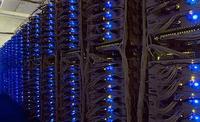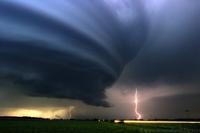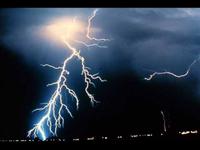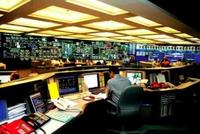-
Capturing CO2 directly from air is chemically, economically viable
With a series of papers published in chemistry and chemical engineering journals, researchers from the Georgia Institute of Technology have advanced the case for extracting carbon dioxide directly from the air using newly developed adsorbent materials
-
-
Pulling CO2 from air feasible, if still costly, way to curb global warming
Emerging techniques to pull carbon dioxide from the air and store it away to stabilize the climate may become increasingly important as the planet tips into a state of potentially dangerous warming; lower-cost technology is a stumbling block so far
-
-
You want to report a pothole? There’s an app for that

The city of Boston offers residents a new app – Street Bump – which will automatically report potholes they encounter; all the driver has to do is install the app and place the smartphone on the dashboard or in the cup holder; the app uses the phone’s motion detector and GPS locator to report potholes
-
-
Temperature rise, CO2 follow each other closely
The greatest climate change the world has seen in the last 100,000 years was the transition from the ice age to the warm interglacial period; new research indicates that, contrary to previous opinion, the rise in temperature and the rise in the atmospheric CO2 follow each other closely in terms of time
-
-
Per capita CO2 emissions in China reach EU levels
Global emissions of carbon dioxide (CO2) increased by 3 percent last year; an estimated cumulative global total of 420 billion tons of CO2 has been emitted between 2000 and 2011 due to human activities, including deforestation; scientists suggest that in order to limit the rise in average global temperature to 2°C above pre-industrial levels, cumulative CO2 emissions in the period 2000–50 cannot do not exceed 1,000 to 1,500 billion tons
-
-
New method for detecting, measuring bridge damage
Researchers have created a bridge health index, which is a rating system that more accurately describes the amount of damage in a bridge; the health index can extend beyond bridges and apply to other structures, such as gas pipelines, dams, buildings, and airplanes
-
-
Cutting massive power use at big data companies in a flash

Big data needs big power; the server farms that undergird the Internet run on a vast tide of electricity — Google, for example, uses enough electricity in its data centers to power about 200,000 homes; now, a team of engineers has a solution that could radically cut that power use — a new type of memory in companies’ servers that demands far less energy than the current systems
-
-
Explaining 2011 extreme weather events

2011 will be remembered as a year of extreme weather events, both in the United States and around the world; NOAA says that every weather event that happens now takes place in the context of a changing global environment; a comprehensive annual report – State of the Climate in 2011 — provides scientists and citizens with an analysis of what has happened so organizations and individuals can prepare for what is to come
-
-
Changing climate to lead to fewer, but more violent, thunderstorms

Researcher predict that for every one degree Celsius of warming, there will be approximately a 10 percent increase in lightning activity; this could have negative consequences in the form of flash floods, wild fires, or damage to power lines and other infrastructure
-
-
Just-the-facts climate change Web site wins World Bank award
The World Bank award a prize to a Web site built to be the antidote to the many myths circulating online about climate change, myths which cause misplaced apathy or alarm; the site also reveals how responding to climate change presents a world of opportunities for individuals and entrepreneurs
-
-
Sharp increase in cyberattacks on U.S. critical infrastructure

The number of reported cyberattacks on U.S. critical infrastructure increased sharply – from 9 incidents in 2009 to 198 in 2011; water sector-specific incidents, when added to the incidents which affected several sectors, accounted for more than half of the incidents; in more than half of the most serious cases, implementing best practices such as login limitation or properly configured firewall, would have deterred the attack, reduced the time it would have taken to detect an attack, and minimize its impact
-
-
Infrastructure security market to reach $32.55 billion in 2012
The global infrastructure security market, in terms of government spending, will reach a value of $32.55 billion in 2012; a new report says that spending on bolstering the cyber aspects of infrastructure security has little utility by itself unless the physical integrity of the infrastructure is also appropriately safeguarded
-
-
More effective radiation detection of cargo, baggage

A new technique for radiation detection that could make radiation detection in cargo and baggage more effective and less costly for homeland security inspectors; the novel detection method relies on spectral shape discrimination (SSD), taking advantage of a new class of nanoporous materials known as metal-organic frameworks (MOFs)
-
-
B612 Foundation unveils first privately funded deep space mission
A private group plans to launch its own space telescope and place it in orbit around the sun; the mission will collect information about Earth-threatening asteroids, but also look for asteroids that may contain valuable raw materials for mining
-
-
Seismic sensors seek source of Spokane quakes
It has been a decade since a swarm of relatively mild earthquakes shook up parts of Spokane, Washington; now, armed with the right tools, scientists want to find out what was at fault
-
- All
- Regional
- Water
- Biometrics
- Borders/Immig
- Business
- Cybersecurity
- Detection
- Disasters
- Government
- Infrastructure
- International
- Public health
- Public Safety
- Communication interoperabillity
- Emergency services
- Emergency medical services
- Fire
- First response
- IEDs
- Law Enforcement
- Law Enforcement Technology
- Military technology
- Nonlethal weapons
- Nuclear weapons
- Personal protection equipment
- Police
- Notification /alert systems
- Situational awareness
- Weapons systems
- Sci-Tech
- Sector Reports
- Surveillance
- Transportation
Advertising & Marketing: advertise@newswirepubs.com
Editorial: editor@newswirepubs.com
General: info@newswirepubs.com
2010-2011 © News Wire Publications, LLC News Wire Publications, LLC
220 Old Country Road | Suite 200 | Mineola | New York | 11501
Permissions and Policies
Editorial: editor@newswirepubs.com
General: info@newswirepubs.com
2010-2011 © News Wire Publications, LLC News Wire Publications, LLC
220 Old Country Road | Suite 200 | Mineola | New York | 11501
Permissions and Policies
